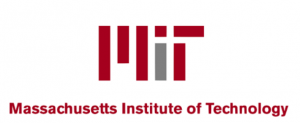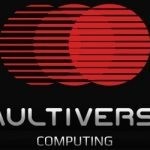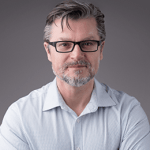 European quantum research body QuTech has opened a testbed to commercialize quantum networking, working with Eurofiber and Juniper Networks, according to Peter Judge of Data Center Dynamics.
European quantum research body QuTech has opened a testbed to commercialize quantum networking, working with Eurofiber and Juniper Networks, according to Peter Judge of Data Center Dynamics.
The testbed will work on quantum cryptography and explore future possibilities for quantum networking. In particular, it will focus on a new form of quantum key distribution (QKD), which will make uncrackable communications available more widely.
The testbed work on a new protocol that extends QKD beyond point-to-point systems. MDI-QKD (measurement device-independent QKD), demonstrated in July 2021 by QuTech — a collaboration between the TU Delft and TNO — allows multiple users to access a QKD network, going beyond the limitations of point-to-point systems.
In the testbed, QuTech is working with infrastructure provider Eurofiber, and network firm Juniper Networks. The team will run a proof-of-concept MDI-QKD system over a commercial optical fiber network to demonstrate it can be more broadly applied. It will be accessible at several Eurofiber locations, through Juniper’s routing, switching, and security products.
The testbed will join a global push on developing quantum networks, commented Lawrence Gasman of Inside Quantum Technology, in an interview with DCD: “There are lots of testbeds and in several different countries, mostly government-funded. Most of them are actually testbeds for QKD. There’s a long way to go for quantum networking.”
*****
 China launched a new quantum satellite last week that could be a first step towards establishing an ultra-secure communications network with global coverage according to SatNews. Quantum News Briefs summarizes here.
China launched a new quantum satellite last week that could be a first step towards establishing an ultra-secure communications network with global coverage according to SatNews. Quantum News Briefs summarizes here.
The quantum satellite, developed by the Chinese Academy of Sciences, would conduct quantum key distribution experiments in lower-Earth orbit, the report said. It is the second quantum satellite launched by China after it sent the world’s first such satellite, Mozi, into orbit in August 2016. Called Jinan 1, it weighs less than 100kg — about a sixth of the weight of Mozi — but can generate quantum keys at speeds two or three magnitude higher, the project team said in a statement posted on WeChat.
“It is also an important step. It makes China the first country in the world to achieve real-time, satellite-to-ground quantum key distribution with micro-nano satellite and miniaturized ground stations,” the statement said.
China’s first quantum satellite, Mozi, is equipped with what was the most sensitive device when it went into orbit six years ago. The satellite has conducted record-breaking experiments in quantum physics, including proving the feasibility of quantum communication from one continent to another.
*****
Post-Quantum Encryption Contender Taken Out: “Totally SIKEd”
 Last month, the US Department of Commerce’s National Institute of Standards and Technology, or NIST, selected four post-quantum computing encryption algorithms to replace algorithms like RSA, Diffie-Hellman, and elliptic curve Diffie-Hellman, which are unable to withstand attacks from a quantum computer. In the same move, NIST advanced four additional algorithms as potential replacements pending further testing in hopes one or more of them may also be suitable encryption alternatives in a post-quantum world.
Last month, the US Department of Commerce’s National Institute of Standards and Technology, or NIST, selected four post-quantum computing encryption algorithms to replace algorithms like RSA, Diffie-Hellman, and elliptic curve Diffie-Hellman, which are unable to withstand attacks from a quantum computer. In the same move, NIST advanced four additional algorithms as potential replacements pending further testing in hopes one or more of them may also be suitable encryption alternatives in a post-quantum world.
A new and powerful attack that used a single traditional computer to completely break a fourth-round candidate highlights the risks involved in standardizing the next generation of encryption algorithms.The new attack breaks SIKE, which is one of the latter four additional algorithms. Dan Goodin of of the venerable ArsTechnica explains in article today summarized here for Quantum News Briefs readers.
SIKE—short for Supersingular Isogeny Key Encapsulation—is now likely out of the running thanks to research that was published over the weekend by researchers from the Computer Security and Industrial Cryptography group at KU Leuven. The paper, titled An Efficient Key Recovery Attack on SIDH (Preliminary Version), described a technique that uses complex mathematics and a single traditional PC to recover the encryption keys protecting the SIKE-protected transactions. The entire process requires only about an hour’s time. Goodin called it “Getting Totally SIKEd”.
“The newly uncovered weakness is clearly a major blow to SIKE,” David Jao, a professor at the University of Waterloo and co-inventor of SIKE, wrote in an email. “The attack is really unexpected.”
It is perhaps a bit concerning that this is the second example in the past six months of a scheme that made it to the 3rd round of the NIST review process before being completely broken using a classical algorithm. (The earlier example was Rainbow, which was broken in February.) More important than understanding the math, Jonathan Katz, an IEEE Member and professor in the department of computer science at the University of Maryland, wrote in an email: “the attack is entirely classical, and does not require quantum computers at all.”
****
Israel Accelerates its Move into Quantum Computing
 Israel first launched its quantum technology initiative in 2018, for which in February it announced a $62 million budget. Now, Israel is also placing significant bets on quantum according to this week’s article by Arne Verheyde at VentureBeat. The Israel Innovation Authority (IIA) has selected Quantum Machines to establish its national Quantum Computing Center. It will host Israel’s first fully functional quantum computers for commercial and research applications. It will host multiple quantum systems based on different qubit technologies to act as a hotbed for innovation.
Israel first launched its quantum technology initiative in 2018, for which in February it announced a $62 million budget. Now, Israel is also placing significant bets on quantum according to this week’s article by Arne Verheyde at VentureBeat. The Israel Innovation Authority (IIA) has selected Quantum Machines to establish its national Quantum Computing Center. It will host Israel’s first fully functional quantum computers for commercial and research applications. It will host multiple quantum systems based on different qubit technologies to act as a hotbed for innovation.
With this announcement, the Israel National Quantum Initiative said its quantum computers will be based on Quantum Machines’ Quantum Orchestration Platform, an integrated control stack called the Pulse Processing Unit that is aimed towards flexibility, extensibility and scalability.
Besides Quantum Machines, several other companies are also part of the consortium. Notably, three companies will provide their distinct approach toward quantum computing. Israel said this would be the first quantum system that supports three distinct technologies. One partner will contribute a superconducting quantum processing unit, while the second will provide its quantum photonics computing system. The third will provide its cold atoms-based quantum computing system. There are also partners for the design of quantum applications, services for HPC and quantum software development.
*****
Mysterious Hidden Quantum Phase in a 2D Crystal Captured by Scientists for the First Time
 Scientists at MIT and the University of Texas at Austin have for the first time captured snapshots of a light-induced metastable quantum phase hidden from the equilibrium universe by using a suite of advanced spectroscopic tools. They were able to view this transition in real-time by using single-shot spectroscopy techniques on a 2D crystal with nanoscale modulations of electron density.
Scientists at MIT and the University of Texas at Austin have for the first time captured snapshots of a light-induced metastable quantum phase hidden from the equilibrium universe by using a suite of advanced spectroscopic tools. They were able to view this transition in real-time by using single-shot spectroscopy techniques on a 2D crystal with nanoscale modulations of electron density.
The project was jointly coordinated by Keith A. Nelson, the Haslam and Dewey Professor of Chemistry at MIT, and by Edoardo Baldini, an assistant professor of physics at UT-Austin. “Understanding the origin of such metastable quantum phases is important to address long-standing fundamental questions in nonequilibrium thermodynamics,” says Nelson.
While this study was carried out with one specific material, the researchers say the same methodology can now be used to study other exotic phenomena in quantum materials. This discovery may also help with the development of optoelectronic devices with on-demand photoresponses.
“The key to this result was the development of a state-of-the-art laser method that can ‘make movies’ of irreversible processes in quantum materials with a time resolution of 100 femtoseconds.” adds Baldini.
*****
Sandra K. Helsel, Ph.D. has been researching and reporting on frontier technologies since 1990. She has her Ph.D. from the University of Arizona.
 China launched a new quantum satellite last week that could be a first step towards establishing an ultra-secure communications network with global coverage according to SatNews. Quantum News Briefs summarizes here.
China launched a new quantum satellite last week that could be a first step towards establishing an ultra-secure communications network with global coverage according to SatNews. Quantum News Briefs summarizes here. Last month, the US Department of Commerce’s National Institute of Standards and Technology, or NIST, selected four post-quantum computing encryption algorithms to replace algorithms like RSA, Diffie-Hellman, and elliptic curve Diffie-Hellman, which are unable to withstand attacks from a quantum computer. In the same move, NIST advanced four additional algorithms as potential replacements pending further testing in hopes one or more of them may also be suitable encryption alternatives in a post-quantum world.
Last month, the US Department of Commerce’s National Institute of Standards and Technology, or NIST, selected four post-quantum computing encryption algorithms to replace algorithms like RSA, Diffie-Hellman, and elliptic curve Diffie-Hellman, which are unable to withstand attacks from a quantum computer. In the same move, NIST advanced four additional algorithms as potential replacements pending further testing in hopes one or more of them may also be suitable encryption alternatives in a post-quantum world.







 European quantum research body QuTech has opened a testbed to commercialize quantum networking, working with Eurofiber and Juniper Networks, according to
European quantum research body QuTech has opened a testbed to commercialize quantum networking, working with Eurofiber and Juniper Networks, according to  Israel first launched its quantum technology initiative in 2018, for which in February it announced a $62 million budget. Now, Israel is also placing significant bets on quantum according to this week’s article by
Israel first launched its quantum technology initiative in 2018, for which in February it announced a $62 million budget. Now, Israel is also placing significant bets on quantum according to this week’s article by  Scientists at MIT and the University of Texas at Austin have for the first time captured snapshots of a light-induced metastable quantum phase hidden from the equilibrium universe by using a suite of advanced spectroscopic tools. They were able to view this transition in real-time by using single-shot spectroscopy techniques on a 2D crystal with nanoscale modulations of electron density.
Scientists at MIT and the University of Texas at Austin have for the first time captured snapshots of a light-induced metastable quantum phase hidden from the equilibrium universe by using a suite of advanced spectroscopic tools. They were able to view this transition in real-time by using single-shot spectroscopy techniques on a 2D crystal with nanoscale modulations of electron density.













